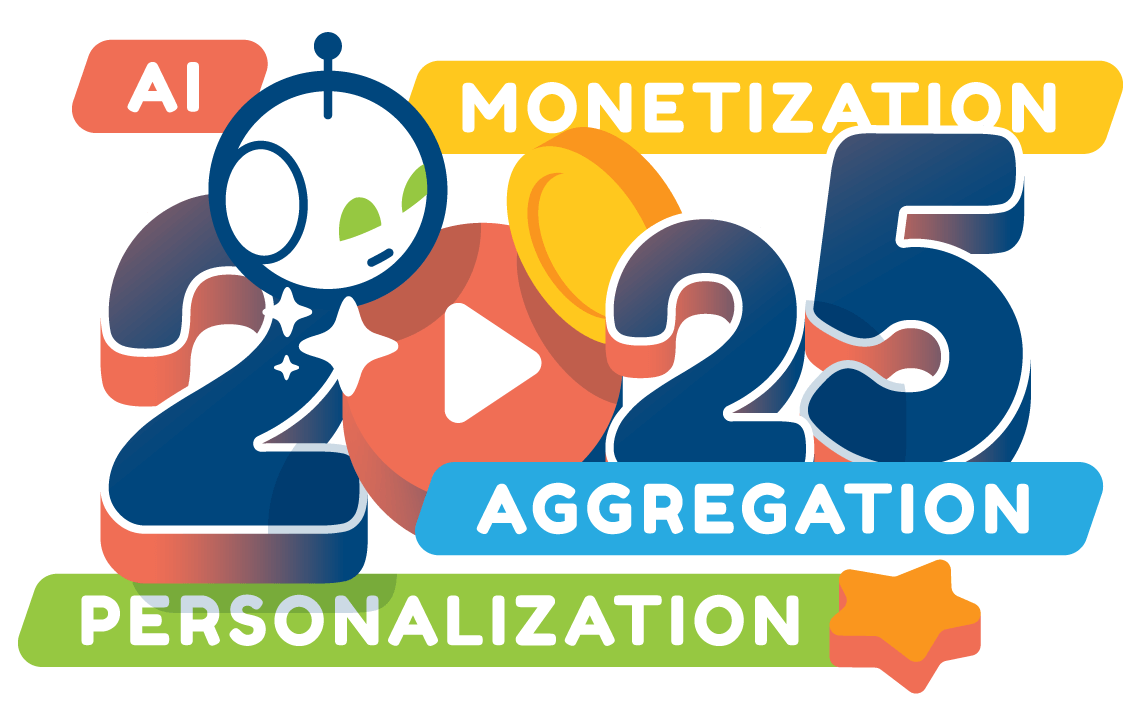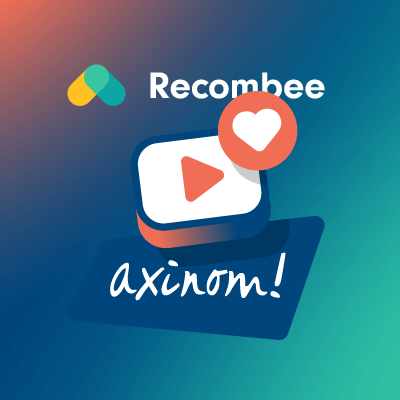

January 15, 2025
Video and Streaming Trends in 2025
Navigating a Rapidly Evolving Media Landscape
Driven by shifting consumer habits, emerging technologies, and evolving business models, online video has become an increasingly complex arena for businesses worldwide. As consumers increasingly seek personalized, cross-platform experiences, platforms are compelled to innovate at an accelerated pace. Below are the key trends shaping the market this year.

1. Personalized and Diverse Content
Audience Demand for Personalization
Consumers today crave tailored recommendations, seamless device switching, and broad content libraries. Most subscribers are more inclined to remain loyal to a streaming service if it consistently provides personalized, relevant content recommendations. However, many viewers remain frustrated with the accuracy of current recommendation engines.
Diversity in Programming
Viewers also expect a wide range of content types—movies, TV series, documentaries, user-generated videos, and short-form clips—to satisfy their diverse tastes. Streaming providers who cultivate robust, diverse catalogs stand a better chance of retaining audiences in a highly fragmented market.

2. The Emergence of Hybrid Monetization Models
From Subscription Fatigue to Ad-Supported Options
Subscription fatigue has been on the rise. Many viewers are either canceling or downgrading premium plans in favor of more cost-effective, ad-supported models. According to internal Disney+ data, 60% of new subscribers opted for the ad-supported tier, underscoring the growing consumer tolerance for ads in exchange for lower costs—or even free access.
Hybrid Is the Future
Increasingly, platforms are blending subscription-based (SVoD) and ad-supported (AVoD/FAST) strategies. This hybrid approach offers multiple tiers to accommodate varying budgets and preferences. Disney+, Hulu and HBO are examples of services successfully rolling out ad-supported plans that bolster revenue without alienating subscribers.

3. AI, Data Practices, and Privacy-Safe Ecosystems
AI for Content Creation, Discovery, and Localization
Artificial Intelligence is increasingly central in content curation, production, and recommendation. Machine learning algorithms help surface relevant content to individual viewers, while AI-driven editing tools speed up post-production workflows. News curation, live translation, and real-time captioning are also increasingly powered by AI, making content more accessible to global audiences.
Ethical AI and Data Privacy
However, these innovations raise questions about data security, user consent, and algorithmic fairness. As governments worldwide pass stricter privacy regulations, streaming platforms adopt first-party data strategies and reinforce ethical standards. Initiatives like privacy-safe ecosystems—where user data is not commoditized or shared beyond transparent boundaries—are a growing trend.

4. Engaging Gen Z and Millennials
Younger viewers are shaping the future of streaming, with Gen Z and millennials demanding:
-
Cost Savings: Budget-conscious bundles and ad-supported tiers.
-
Personalized Ads: Higher receptivity to targeted, non-intrusive advertising that fits their interests.
-
Flexible Schedules: Both bingeable and weekly release options to suit different viewing habits.
Platforms that can balance affordability, personalization, and convenience will resonate with younger audiences, who often drive trends through social media amplification.

5. Content Discovery Challenges and Opportunities
Challenges
With most households subscribing to multiple VOD services, content fragmentation is rife. Navigating multiple platforms, each with its own interface and catalog often frustrates users. Unified search tools and aggregator platforms are emerging as solutions, offering a centralized destination to discover and manage content from different services. Platforms are also overcoming discovery challenges with the application of AI-driven recommendations.
Opportunity for Aggregators
Big tech companies and smart TV manufacturers are experimenting with integrated interfaces that allow users to browse and discover shows across multiple streaming apps without opening each app separately. This shift promotes content discovery and can reduce churn by making users feel they have more control over their libraries.

6. Collaboration and Standardization: An Industry-Wide Imperative
As the streaming landscape grows increasingly complex, the need for interoperability, standardized practices, and collaborative solutions has become critical.
Streaming stakeholders have recognized that tackling challenges—ranging from ad insertion and metadata management to digital rights management—often requires collective problem-solving. With AI continuing to evolve, its role in content discovery, user personalization, and real-time security measures expands and there’s even an increased need for industry-wide consortia and collaboration to ensure AI-driven solutions are developed responsibly—balancing efficiency gains with user privacy, intellectual property considerations, and transparent data practices.

7. Preparing for the Future: Flexibility and Scalability
Technology Solutions that Mitigate Complexity
As the streaming landscape becomes more complex, platforms need infrastructure that can handle rapid scaling, diverse monetization models, and seamless user experiences. There’s an increasing interest in platforms that allow for hybrid architecture for services and customizability. Platforms like Axinom Mosaic exemplify the market’s push toward flexible and modular, cloud-native architectures designed to unify fragmented workflows that cover content management, delivery, and subscriber engagement into one cohesive system.
Conclusion
This year marks an exciting new chapter in video and streaming, driven by AI breakthroughs, heightened personalization, and flexible technology architectures. Platforms that deliver frictionless, customizable, and data-driven experiences will have a competitive edge. Agility has never been more important: whether it’s upgrading your tech stack or adopting platform-agnostic strategies, the ability to adapt quickly can set you apart in this fast-evolving market.
At the same time, embracing open standards and participating in collaborative industry initiatives can help providers address market fragmentation more effectively, ensuring secure, scalable solutions that benefit the entire ecosystem. By working toward cohesive best practices, the streaming sector can foster an environment where interoperability, innovation, and consumer satisfaction flourish.
Are you looking to stay ahead in a rapidly changing industry? Discover how Axinom Mosaic can equip your platform with the agility needed for lasting success. Connect with our experts today to explore solutions tailored to future-proof your streaming ecosystem for the opportunities ahead.
Further Reading











